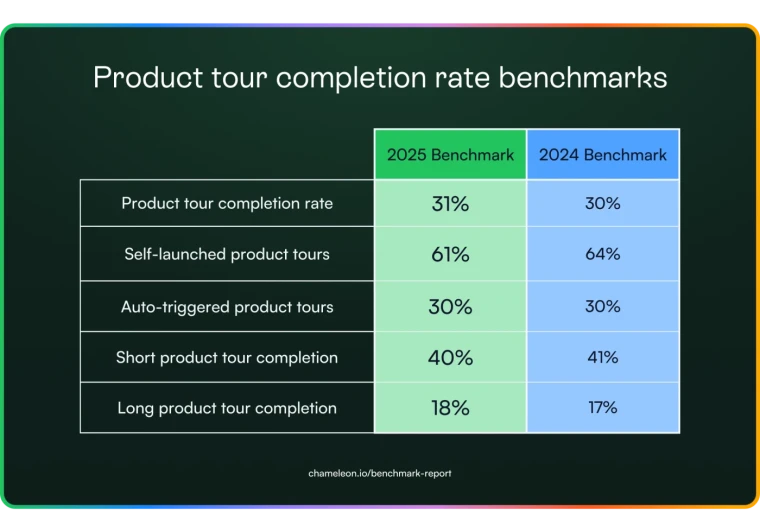If you’ve spent any time in SaaS circles, you’ve probably stumbled into one of those LinkedIn debates—the ones that start innocently and escalate into a comment-fueled gladiator match. Last week, I saw a post that was equal parts intriguing and frustrating.
It started with a simple question:

Cue the floodgates. Purists screamed, “Build it in-house for ultimate control!” Pragmatists rolled their eyes: “Why reinvent the wheel when third-party tools exist?” Meanwhile, the skeptics leaned in, furrowing their brows and typing furiously: “Neither will fix your bad UX, Karen.”
I couldn’t resist jumping in. As the CEO of a Digital Adoption Platform (DAP)—I’ve seen these debates rage on like the Game of Thrones finale discourse. And just like that finale, we often miss the point.
The real issue isn’t “build vs. buy.” It’s about using onboarding tools strategically to solve actual problems. So, let’s dive into the real debate: not who wins, but how to play the game right.
The Debate: “build vs. buy” or just fix it already?
The Purists: “If you don’t build it in-house, you don’t care about your users.”
The Pragmatists: “Buying is faster, smarter, and lets you focus on your product.”
The Realists: “Neither works if your UX is a dumpster fire.”
Elena Verna, a growth strategist whose words read like gospel to SaaS geeks, summed it up best: “Onboarding tools are band-aids for bad design. Put pressure on the experience instead.” Translation? If your product feels like a maze designed by Jigsaw, onboarding won’t save you.
Then there was Chetan Rawal, who also cut through with: “Tooltips? No. Stop asking users to forgive bad UX with bandaids.”
Finally, Roman Aleksandrenko pointed out, “Low completion rates are symptoms of deeper issues like misaligned value props or asking too much of users too soon.” It’s like buying the best hammer but forgetting you’re supposed to build a house, not whack random nails.
But… what’s wrong with the classic build vs. buy debate?
It misses the bigger picture. It’s like arguing over whether Batman or Iron Man is the better superhero. The real question should be: What problem are you solving, and are you doing it well?
Here’s why it's flawed:
Building isn’t always better
Picture this: you’ve convinced your engineering team to build a custom onboarding flow. Six months later, your “simple” project has ballooned into a Frankenstein’s monster of spaghetti code, barely functional analytics, and endless handoffs.
One comment from Simon Morel in the thread nailed it. While SDKs can solve front-end challenges and provide flexibility, the handoff between teams often complicates execution. Without tight collaboration, what starts as a solution can quickly turn into a bottleneck.

Buying isn’t always easier
Then there’s the other extreme: buying a tool, slapping it onto your product, and calling it a day. If it feels like a cheap knockoff, your users will notice.
Roman Aleksandrenko called out WalkMe as “the most counterintuitive and painful tool” he’d ever used. Ouch. This is what happens when teams treat third-party tools as plug-and-play solutions without customization.

Band-aids don’t fix bullet holes
Elena Verna’s “band-aid” analogy stuck with me because it’s painfully accurate. Onboarding tools can’t fix broken workflows or overpromised marketing. If your product sets users up to expect Hogwarts but delivers Hogwarts Express delays, no onboarding tool will help.

For a deeper dive into whether building or buying makes sense for your team, check out our Build vs. Buy Guide.
So, what’s the real debate?
The real debate should be: How do we design onboarding that actually works?
Here’s where the LinkedIn thread offered some real gems:
Jackson Noel from Appcues said, “Show the right in-app experience to the right user at the right time.” It’s not rocket science; it’s like Netflix recommendations. If you show a rom-com fan Saw IV, don’t be surprised when they leave.
Sasha Tsimbler reframed onboarding as “an integral part of the customer journey.” It’s not about explaining how the product works; it’s about helping users achieve their goals.
Several comments pushed for A/B testing and data-driven tweaks. As Sebastian Wilk put it, it's less about the tool and more about the fundamentals. In other words, it's not about perfection—it's about precision. Channel your inner Taylor Swift and hit the right note instead of chasing a one-hit wonder.

How to solve the puzzle
Here’s the playbook I shared in the thread (and live by at Chameleon):
Patterns matter: Walkthroughs are going out of vogue because they’re seen as interruptive and patronizing. Instead, use embeddable patterns like hotspots, checklists, or feature discovery cards. These feel native and let users engage on their own terms—think Spotify Wrapped, not Clippy.
Iterate relentlessly: Onboarding is an ongoing experiment that thrives on feedback. Degreed is a great example of this—using product tours to highlight critical changes and Microsurveys to gather actionable user feedback, they achieved a 280% increase in beta opt-ins.
Focus on outcomes, not features: The biggest misconception in onboarding is thinking it’s about showing off your product’s bells and whistles. It’s not. As Sasha said, it’s about guiding users to the promised land—whether that’s hitting their first “aha” moment or completing a key action.
Integrate, don’t interrupt: Great onboarding doesn’t feel like onboarding. It feels like a natural extension of the product. Successful SaaS companies avoid intrusive pop-ups and tooltips. Instead, they use subtle, contextual nudges that help without annoying.
When to Build, buy, or blend
Here’s the framework I laid out in the thread:
Build if:
Your workflows are so specialized that generic tools can’t support them.
You have the engineering resources to create and maintain a bespoke solution.
You want pixel-perfect control over every interaction.
Buy if:
You need to launch quickly and lack engineering bandwidth.
Your focus is on experimentation and iteration.
You want access to features like A/B testing, analytics, and segmentation out of the box.
Blend if:
You want the scalability of third-party tools but need bespoke elements for key moments.
Your product requires deep integrations with other in-app experiences.
Deciding between building or buying isn’t always straightforward. If you’re evaluating your options, our Buyer's Guide lays out a clear step-by-step playbook to help you make the right choice.
Strategy > Tools
Tools are just tools. What matters is how you use them. As Imran pointed out in the thread, “You need to understand where users drop off and why. Without this, no tool will help.”
It’s like handing someone a lightsaber without teaching them how to use the Force. Sure, it’s shiny, but they’ll probably hurt themselves.
At Chameleon, we focus on empowering teams to design onboarding flows that feel intuitive and user-centric. Our tools are accelerators, not crutches. They let you iterate faster, test smarter, and deliver experiences that don’t just onboard users but make them stick around.
Don’t skip the why
Every time I see a SaaS team obsess over onboarding tools without revisiting their strategy, I think of Jurassic Park. They were so preoccupied with whether they could make dinosaurs that they didn’t stop to think if they should.
Onboarding isn’t just about the “how.” It’s about the “why.” Why aren’t users completing your flow? Why do they feel stuck or confused? Answer these questions first, and the tools—whether built or bought—become secondary.
It’s not about whether you build or buy. It’s about creating onboarding experiences that help users win. So, here’s my grain of sand: Start thinking strategically about what onboarding is supposed to achieve. And use DAPs to complement—not replace—a thoughtful, user-first approach.
Tools are accelerators, not crutches. They help you iterate faster, test smarter, and deliver experiences that stick. Curious about how this works in practice? Check out how Degreed used Chameleon to onboard thousands of users to a redesigned platform.







